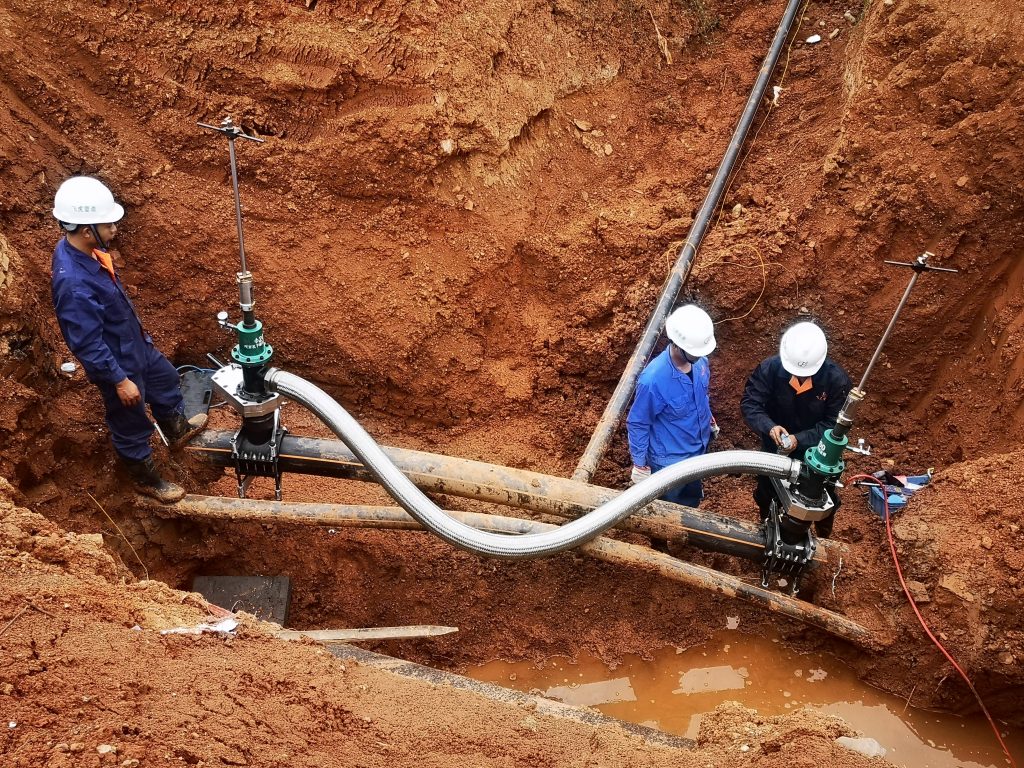The Role of PE Line Stopping in Pipeline Maintenance
PE Line Stopping is a specialized method used to temporarily block the flow of product in pipelines while keeping the rest of the system fully operational. This technique has become essential for industries where continuous flow is critical, such as gas, water, and oil transportation. Instead of shutting down entire sections of a pipeline, technicians can isolate one specific area to perform maintenance or upgrades. The process is particularly effective for high-density polyethylene (HDPE) pipelines, which are widely used due to their durability and flexibility. By using mechanical stoppers, PE line stopping allows engineers to carry out work without disrupting service to communities or businesses. For companies managing critical infrastructure, this approach provides efficiency, safety, and cost savings. As demand for uninterrupted service grows, PE line stopping is becoming the preferred choice for modern pipeline maintenance.
Step-by-Step Process of PE Line Stopping
The process of PE Line Stopping begins with preparing the pipeline section where maintenance will take place. Specialized equipment is used to carefully access the line, and technicians insert a mechanical stopper designed to block flow at a designated point. This creates a sealed and isolated section, allowing safe and controlled work without affecting the rest of the pipeline. Safety is a priority throughout the procedure, with strict monitoring of pressure and flow conditions to ensure stability. The method is compatible with different pipeline diameters and pressures, which makes it versatile for various industries. After maintenance or modifications are completed, the stopper is removed, and the pipeline is restored to full operation quickly. This streamlined process minimizes disruption while ensuring the integrity of the pipeline system.
Major Advantages of PE Line Stopping
The benefits of PE Line Stopping extend across financial, operational, and environmental aspects. One of the greatest advantages is the reduction of downtime, allowing companies to keep pipelines active while making necessary adjustments. This means operations can continue without costly shutdowns or interruptions in service delivery. In addition to saving time, the process significantly reduces maintenance costs compared to traditional shutdown methods. Another important benefit is environmental protection, as localized isolation reduces the risk of leaks, spills, or contamination during repairs. PE line stopping also enhances the integrity of HDPE pipelines by focusing work only on the affected area, avoiding unnecessary stress on the broader system. The versatility of this method makes it suitable for different industries and pipeline applications. By combining cost efficiency, safety, and adaptability, PE line stopping stands out as a superior maintenance solution.
Where PE Line Stopping Is Commonly Applied
PE Line Stopping has broad applications across multiple industries that depend on reliable pipeline systems. In natural gas distribution, it is used to carry out repairs or upgrades without interrupting supply to households and businesses. Water utilities also benefit greatly, as the method allows critical work to be performed without cutting off access to communities that depend on continuous water service. In the oil and chemical sectors, PE line stopping is used to maintain pipelines that operate under high pressure, reducing risk and ensuring operational reliability. The technique is also valuable in infrastructure development projects, where existing pipelines may need modifications during expansions. Emergency repairs are another area where the method proves highly effective, enabling quick isolation and intervention without shutting down an entire network. With its versatility, PE line stopping has become a trusted solution across both public and private sectors.
Selecting the Right PE Line Stopping Service Provider
Choosing a reliable provider for PE Line Stopping services is essential to ensure both safety and effectiveness. Technicians should have extensive training and certification in live pipeline maintenance to manage the risks involved. Advanced equipment is equally important, as high-quality stoppers and tools help maintain the integrity of pipelines during operations. Service providers must also comply with industry safety regulations and follow strict protocols to protect workers and infrastructure. When evaluating providers, companies should consider the service history, experience with HDPE gas pipelines, and reputation for reliability. Customized solutions tailored to the specific needs of different pipelines are also a strong indicator of a provider’s expertise. Partnering with a trusted provider ensures that PE line stopping operations are carried out smoothly, cost-effectively, and with the highest safety standards.
Best Practices for Safe and Efficient PE Line Stopping
Safety remains the top priority when carrying out PE Line Stopping in live pipelines. Personnel must undergo specialized training to handle equipment correctly and respond to unexpected conditions during maintenance. Pressure monitoring is critical to ensure the pipeline remains stable while isolated sections are being worked on. Routine inspections of equipment, such as mechanical stoppers and seals, help reduce the risk of malfunction. Best practices also involve clear communication and coordination among technicians, supervisors, and safety officers during operations. Environmental protection must be considered, with measures taken to prevent leaks, spills, or contamination. By adhering to strict procedures and following established safety standards, organizations can maintain efficiency while safeguarding workers, communities, and infrastructure.
Emerging Technologies and Innovations in PE Line Stopping
Advances in technology continue to enhance the safety and efficiency of PE Line Stopping. Modern stoppers are being developed with stronger materials and better sealing capabilities, making them more reliable for high-pressure pipelines. Automation and digital monitoring are increasingly being integrated into the process, reducing human error and enabling real-time oversight of flow conditions. Some service providers now use remote-controlled equipment, allowing operations to be conducted with greater precision and safety. Innovations in HDPE materials also contribute to more resilient pipeline systems, reducing the frequency of maintenance needed. Training programs are evolving to include new technologies, ensuring technicians stay current with the latest best practices. These advancements are shaping the future of live pipeline maintenance by making PE line stopping faster, safer, and more cost-effective. For industries relying on uninterrupted flow, embracing these innovations offers a significant competitive advantage.
Frequently Asked Questions (FAQ)
What types of pipelines are suitable for PE Line Stopping?
PE line stopping is effective for HDPE pipelines as well as systems used for gas, water, oil, and chemical transport. Its flexibility allows it to adapt to different sizes and pressure conditions.
Is it safe to use PE line stopping on high-pressure HDPE pipelines?
Yes. The method is specifically designed for high-pressure environments, and modern equipment ensures that operations are both safe and reliable.
How much time does a typical operation require?
The duration depends on the size of the pipeline and the type of maintenance, but PE line stopping is usually faster than a full pipeline shutdown.
How does this method compare with traditional shutdowns in cost and efficiency?
PE line stopping is more cost-effective because it avoids the expenses of shutting down and restarting entire systems while reducing downtime.
What precautions must be taken during the process?
Personnel must follow strict safety protocols, ensure equipment is inspected, and monitor pipeline conditions closely to maintain stability during operations.











